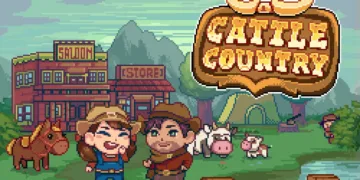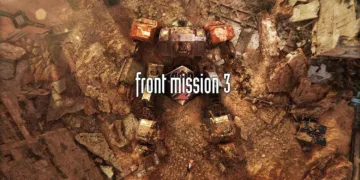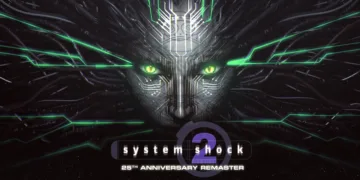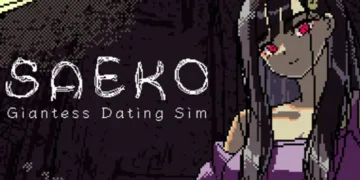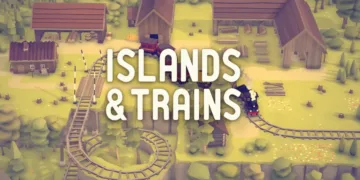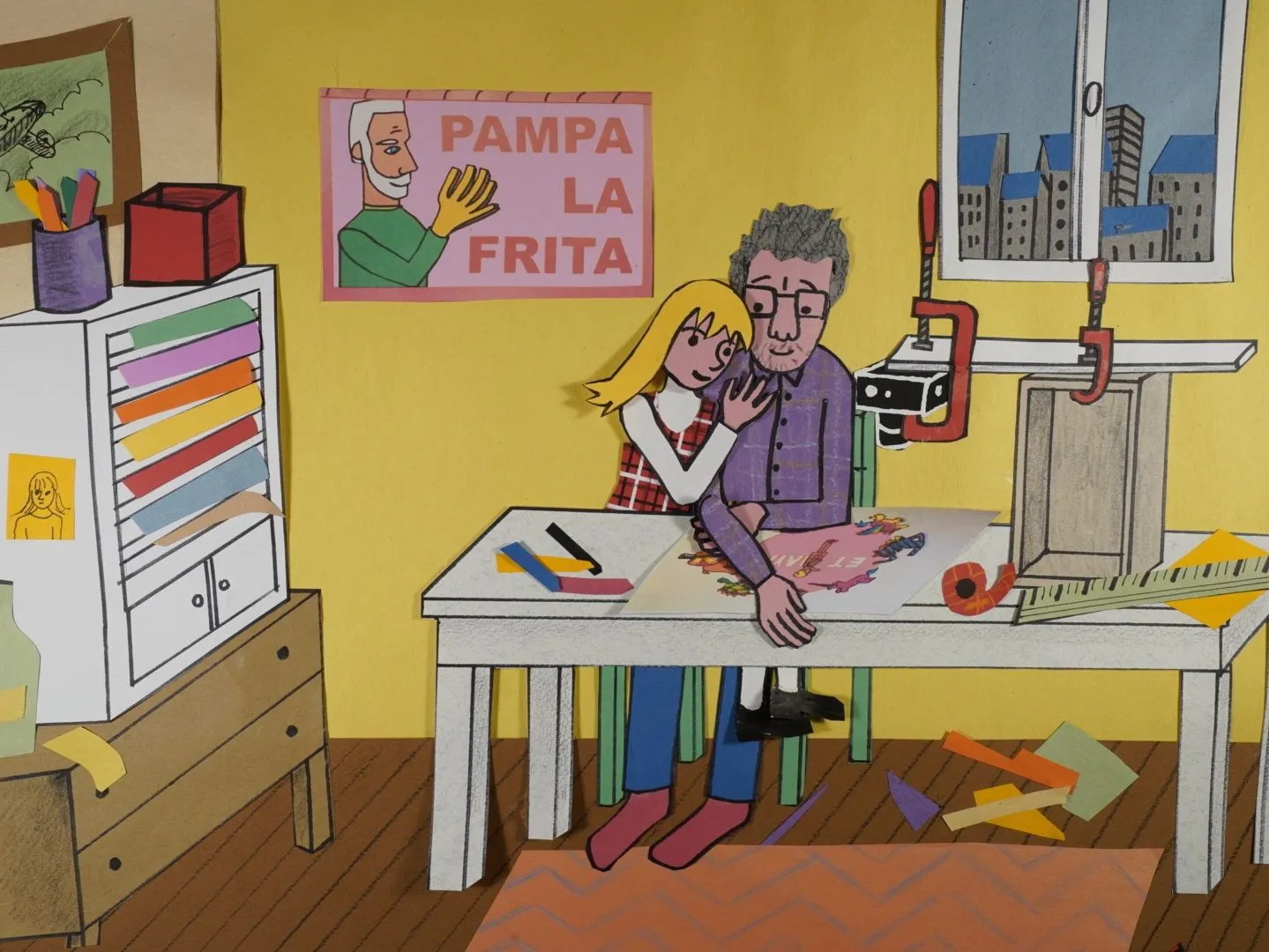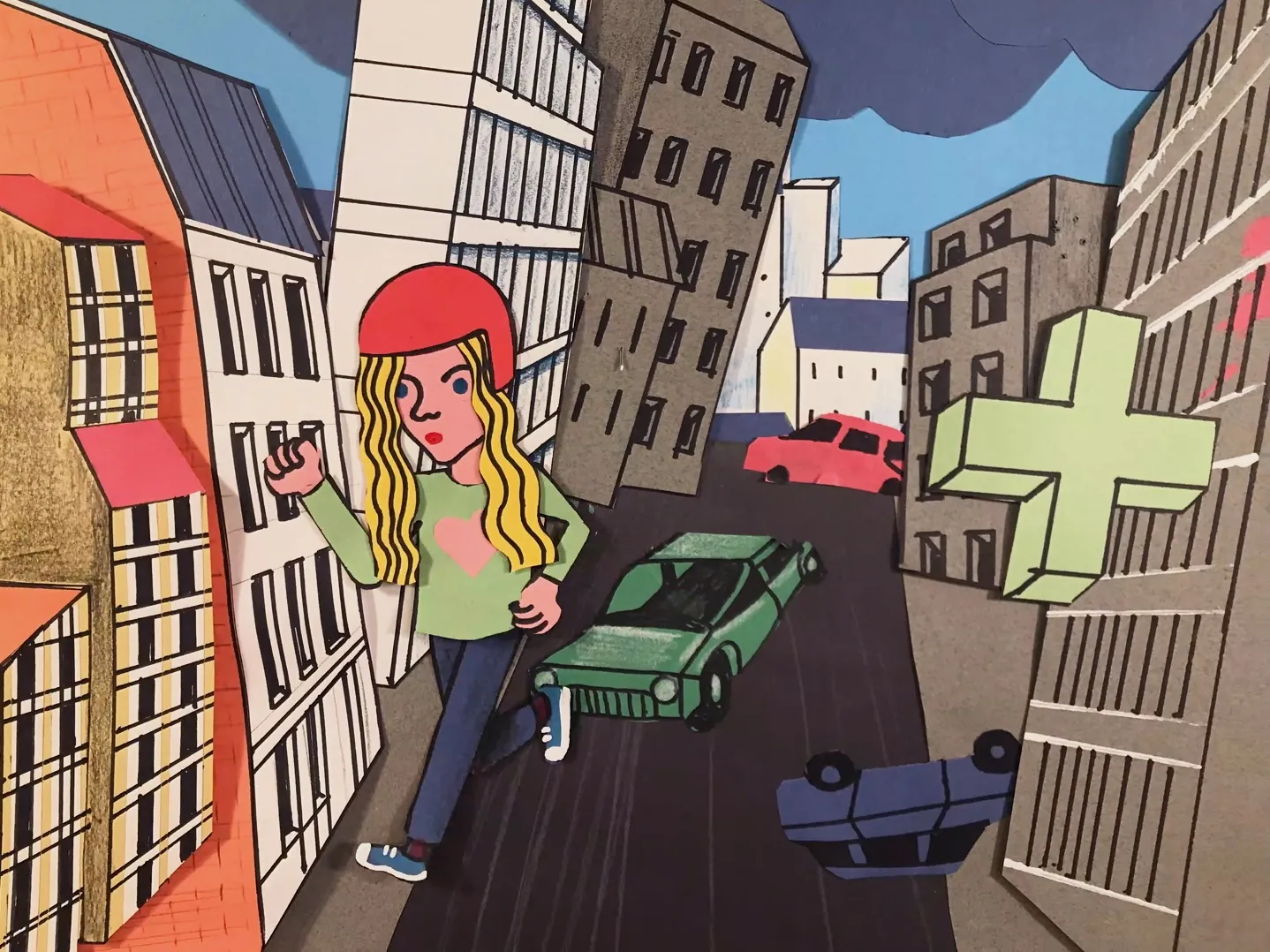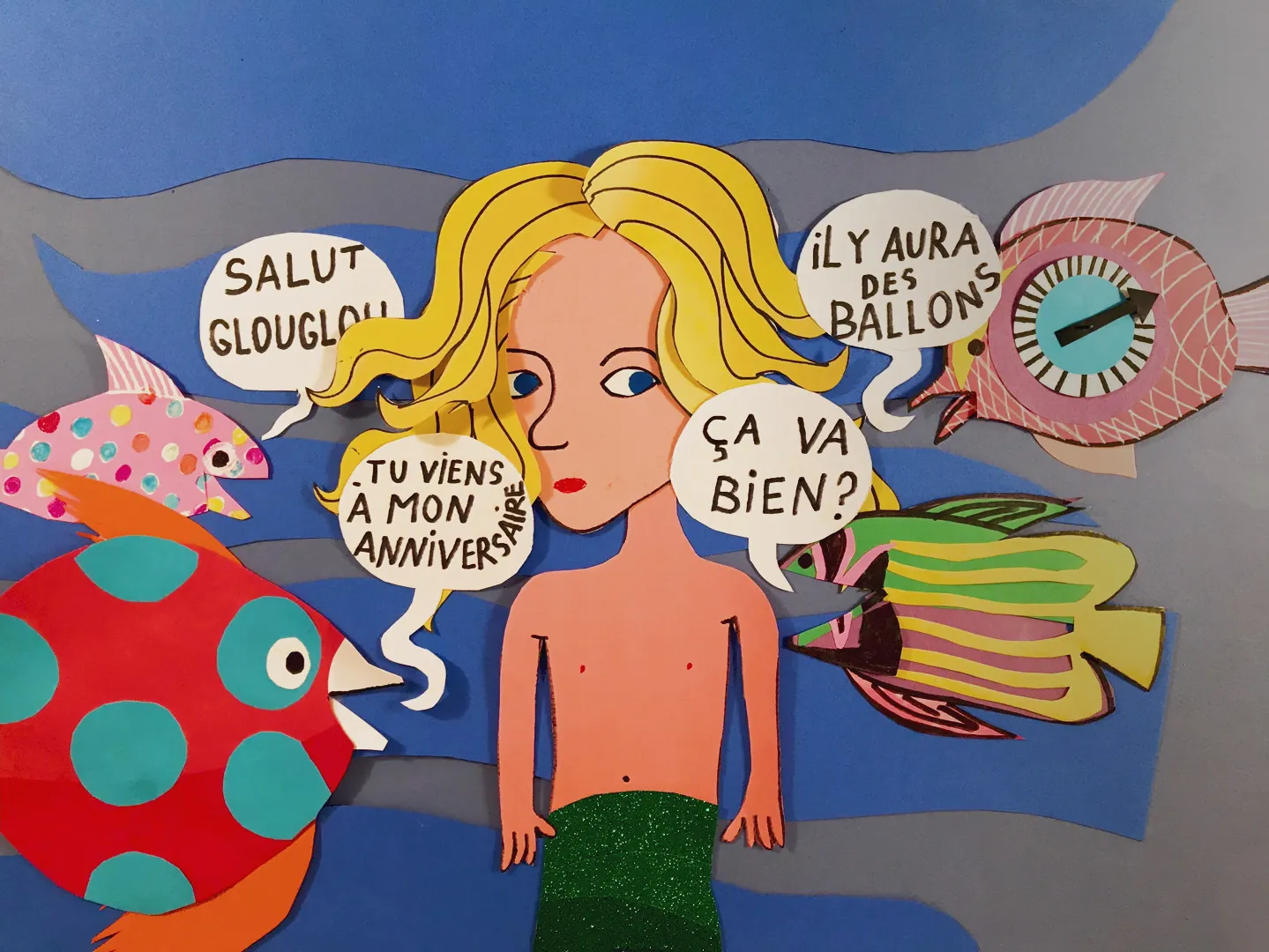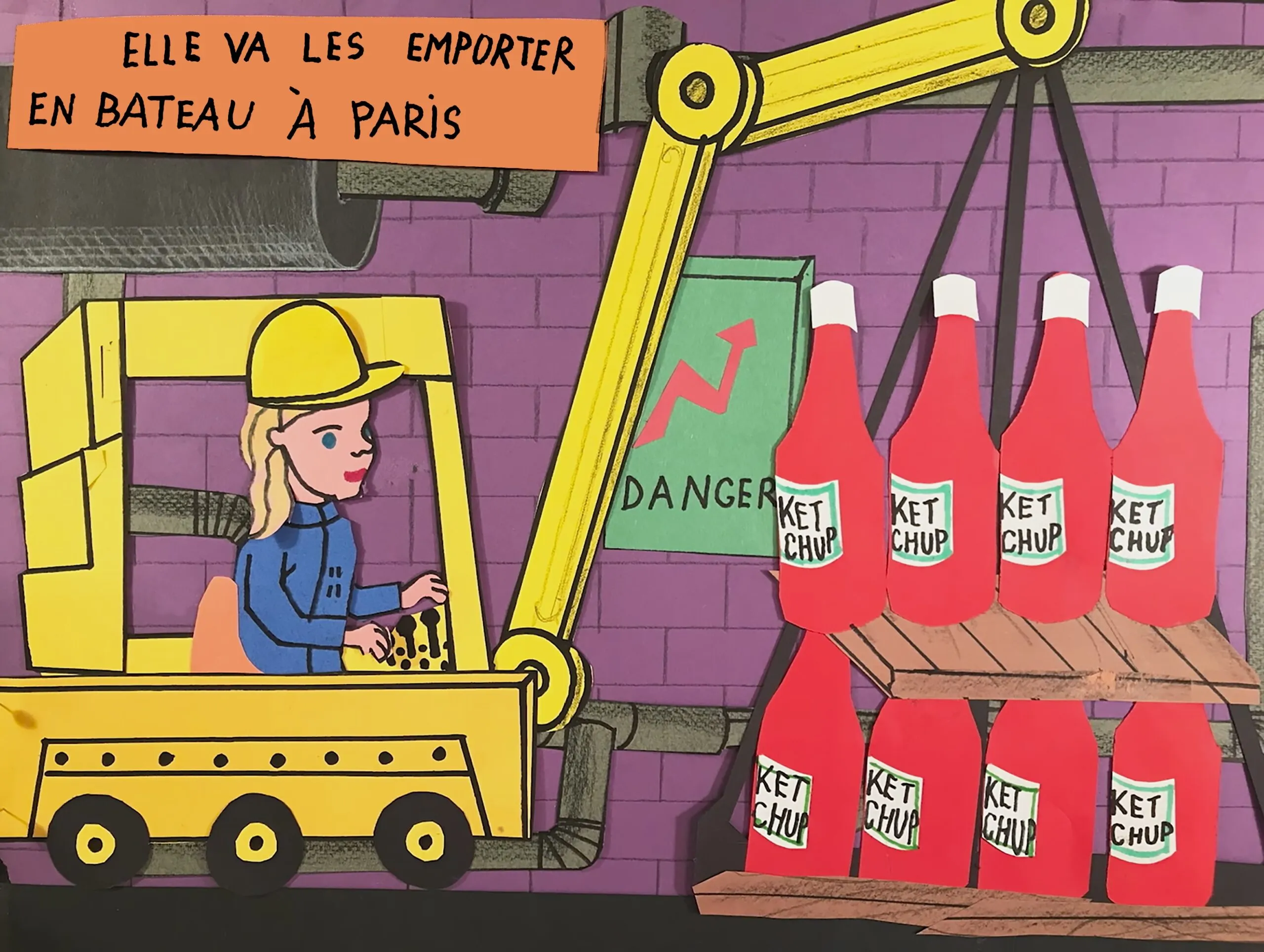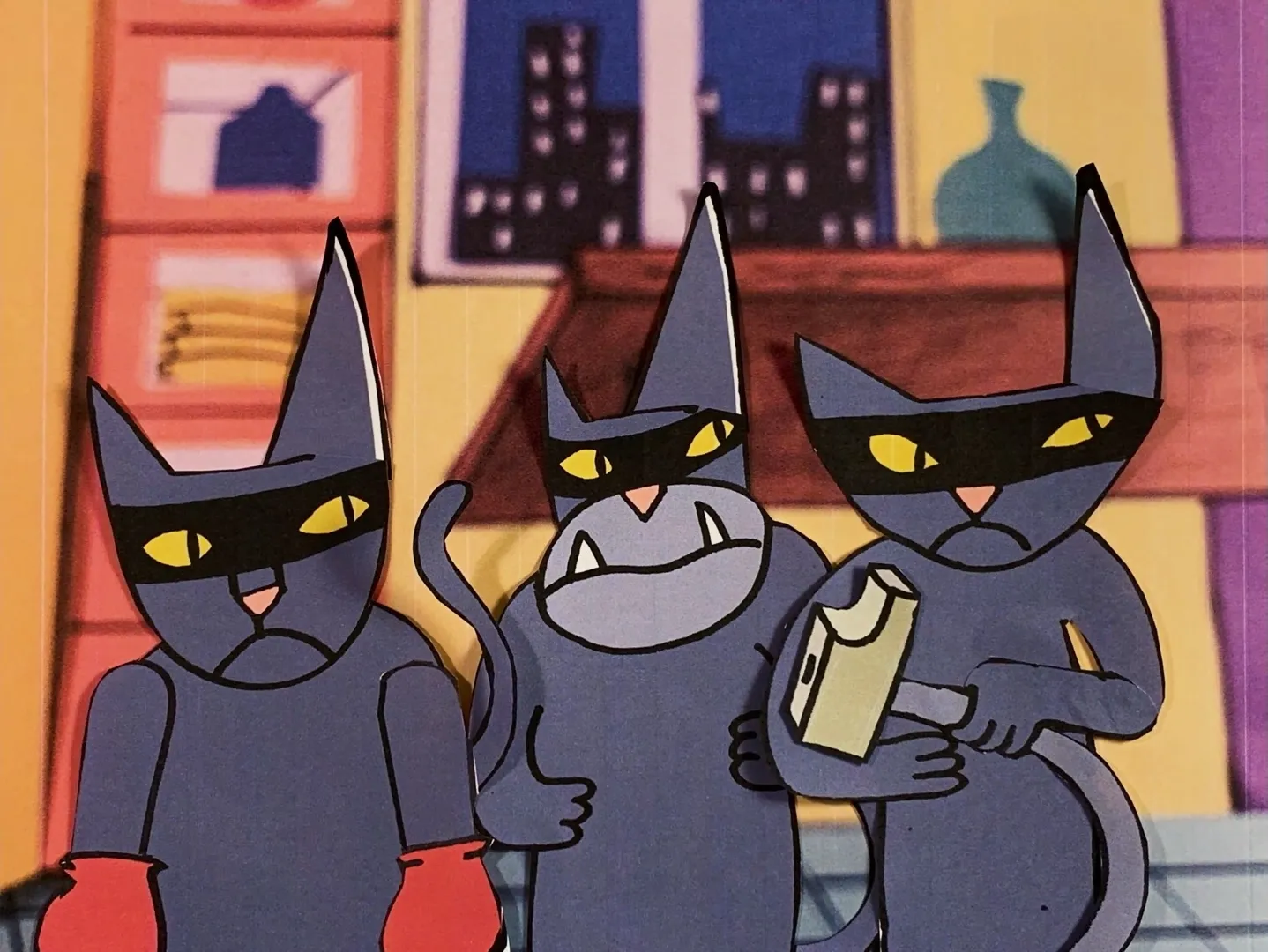At its heart, Maya, Give Me a Title conjures an intercontinental dialogue spun from scissors, tape and childhood wonder. A six-year exchange unfolds as Maya, seated before the camera, offers off-the-cuff titles that Michel Gondry transforms into hour-long stop-motion vignettes. These paper-cut adventures—bookended by live-action interludes—trace a playful surrealism grounded in tactile craft.
Gondry wears both director’s cap and animator’s gloves, while Maya steers the narrative with innocent audacity. Pierre Niney’s voiceover turns each title into a character, lending buoyant personality to scenarios that range from hammock-thieving squirrels to ecological ketchup catastrophes. Jean-Michel Bernard’s score hums with retro-tinged warmth, and Frédéric Junqua’s carefully chosen tracks evoke ’50s-era suspense and joy.
The film’s hybrid format marries childlike spontaneity with seasoned artistry, animating simple cutouts at twelve frames per second yet preserving every fingerprint and pencil stroke. A palette of rich secondary hues enhances the handcrafted universe, where a giant robot and a clockfish can occupy the same frame without straining credulity. At once ode and experiment, this cinematic correspondence celebrates imaginative flight and the invisible thread that links parent and child across miles.
The Alchemy of Paper and Prompt
A tender ritual lies at the core of this film: a daughter’s spontaneous command—“Give me a title”—met with a father’s eager response across an ocean. Separated by Gondry’s work commitments in the United States and Maya’s life in France, the pair forged a creative bridge over six years. Beginning when Maya was barely four, each whimsical prompt became a spark for a new paper-cut adventure, distilled into an hourlong tapestry of miniature worlds.
Maya’s mother served as an unseen collaborator, voicing the child’s raw titles for Gondry’s reference. Those off-the-cuff phrases seeded narratives that bend logic yet feel logically born of a child’s wonder. In one moment, Maya commands a ketchup-laden sea; the next, she confronts thrice-thieving cats. Every scenario carries the imprint of youthful surprise, unfiltered and exhilarating.
Early tests involved simple smartphone time-lapses of color-splashed cutouts dancing under makeshift lighting. As ambition grew, An antique-inspired rig shot at twelve frames per second lent fluidity without erasing the fingerprints of tape and scissors. A commitment to hand-crafted authenticity persists: each scene bears the grain of construction paper, the gleam of Scotch tape edges, the warmth of human touch in every frame.
Interspersed between stop-motion vignettes are live-action pockets featuring Maya in an empty room. As she introduces each segment, the setting accumulates furniture and art—an echo of the shorts’ own progression from spare shapes to bustling set pieces.
Pierre Niney’s narration injects dynamic flair, transforming childlike titles into characters in their own right. Graphic subtitles, treated as design elements rather than afterthoughts, slide into view with crisp geometry. Through this interplay of voice and visuals, voiceover and image merge, animating both story and the loving bond that gave it life.
Handmade Horizons of Color and Motion
A rush of mustard greens, burnt ochres and slate blues sweeps across each frame, favoring a palette drawn from secondary hues. Paper edges reveal pencil strokes and glue smudges, layering a collage-like landscape that feels lived-in rather than manufactured. This deliberate choice honors the material’s grain, inviting viewers to sense the cut-out figures as tactile emissaries of a handcrafted world.
Animation unfolds at roughly twelve frames per second, lending a rhythmic cadence that balances whimsy with momentum. When speed-ramping accelerates scenes—a paper plane hurtling into the sky or ketchup waves cresting—it heightens the playful urgency without sacrificing the handmade charm. Shadows shift and paper rustles, each slight movement a reminder of the human hands orchestrating this miniature theatre.
Text elements arrive with graphic brevity. Bold, easy-read subtitles slide in as part of the mise-en-scène, their geometry echoing the shapes in motion. Intertitles appear as design components, not afterthoughts, reinforcing the sense that every visual decision is woven into the film’s aesthetic fabric.
Maya’s on-camera segments are captured by a fixed frame, the young host standing in an empty room that gradually fills with chairs, books and artwork. This accumulation mirrors the shorts’ own growth—from simple cutouts to intricate paper architectures—without ever distracting from the tactile core of the animation.
In tracing Gondry’s analog lineage, echoes of The Science of Sleep and his early music videos resonate here. Where high-budget CGI often seeks to dazzle, this film embraces small-scale intimacy. It asserts that magic lives in scissors, tape and human touch, reclaiming a form of visual storytelling that feels both timeless and urgent in a world dominated by digital gloss.
Kaleidoscopic Chapters of Paper and Tape
Episodes unfold like fragments of a daydream, each vignette tethered to the next by Maya’s bright-eyed interludes. There is no single narrative spine here—just a series of miniature odysseys stitched together with live-action pauses. The result is a rapid-fire rhythm: one moment you’re watching hammock-stealing squirrels, the next you’re swept into a retro-tinged sea awash with ketchup.
In “Hammock-Stealing Squirrels,” tension mounts in a few spare frames, then snaps into a sly punchline as woodland bandits abscond with Maya’s repose. “Maya in the Sea with a Bottle of Ketchup” trades in surreal humor, casting a familiar condiment as a force of ecological chaos.
The cut-out cops chasing three thieving cats escalate from slapstick to absurdity, while a sudden shrink ray sends Maya spiraling down a drain into a subterranean drum-kit “documentary.” Finally, a clockfish glides past a makeshift giant robot, sewing a hint of science-fiction into this playful tapestry.
Narration arrives with deadpan precision. Pierre Niney’s voice intones heroic flourishes—“Cats save children every day”—only to undercut them with a knowing wink. That tension between childlike wonder and dry wit breathes life into scenes that might otherwise read as mere craft experiments.
Visually, each short “grows” in complexity, mirrored by the way Maya’s empty room accumulates chairs, paintings and odd trinkets. Match-cuts of paper shapes segue between worlds, as if ribbons of imagination bind one realm to the next. Shadows shift, textures layer, and viewers sense that each frame could belong to a different chapter in an endless storybook.
This structure rejects three-act convention, inviting viewers to embrace possibility over plot. The film trusts the audience to fill in gaps, to imagine what comes after the last frame flutters into place.
Audible Threads of Whimsy
Jean-Michel Bernard’s light orchestration tiptoes between jaunty piano motifs and airy woodwinds, conjuring an era of retro parlour games and roadside diners. His themes thread playful suspense through each vignette, occasionally swelling into cinematic swells that heighten fleeting moments—a squirrel’s heist, a whirlwind shrink-ray sequence—while maintaining an undercurrent of gentle warmth.
Frédéric Junqua’s music supervision stitches in ’50s and ’60s pop gems, each licensed track landing like a nostalgic wink. A rockabilly riff underscores Maya’s command to brave ketchup seas, then dissolves into silence before a plaintive guitar slide ushers in the next adventure. These musical punctuation marks amplify comedic beats, coaxing laughter without resorting to obvious cues.
Foley work celebrates the medium’s materiality: paper rustles whisper secrets, tape peels punctuate transitions, stop-motion clicks echo the maker’s hand. At precise moments, silence becomes an instrument—an empty pause that magnifies a paper plane’s flight or a character’s glance. Meanwhile, layers of ambient hum—distant footsteps, murmured chatter—occasionally breach the musical surface, hinting at life beyond the paper stage.
Audio and image dance in tandem. Cuts snap to musical accents, while voiceover lines receive subtle double-tracking, lending narration a twin echo that emphasizes punchlines. The result is a collage of sound that feels both handcrafted and meticulously tailored, where every rustle and note guides the eye and ear into Gondry’s paper-crafted realms.
Bonded by Paper Dreams
A father’s scissors and a daughter’s imagination merge into a single heartbeat across oceans. This film frames creative collaboration as an act of emotional closeness, each title prompting a miniature world that bridges absence with reunion. In every paper puppet and tape-wrapped tableau, the invisible thread between Michel Gondry and Maya pulses—a reminder that art can embody longing as vividly as any spoken word.
Here, imagination reigns supreme over logic. A child’s offhand command to brave ketchup seas or outwit thieving cats becomes a manifesto of wonder, unfiltered by adult caution. The ritual of play resurfaces as a lifeline, each stop-motion vignette serving as a testament to the power of spontaneous storytelling. What begins as a simple game blossoms into an emotional archive, where innocence dictates narrative directions.
The contrast between tactile paper and boundless fantasy feels sharper in our digital age. Every visible pencil mark and errant glue strand stands in quiet protest against pixel-perfect illusion. This handmade ethos refuses to cede ground to slick technology, celebrating imperfection as the catalyst for genuine surprise.
Beneath the film’s exuberance lurk faint notes of unease: ecological ketchup floods, fragments of a world both playful and precarious. The tension between joy and fragility threads its way through scenes of miniature disaster—hints that creation and destruction can share the same paper sheet.
Ultimately, Maya, Give Me a Title invites viewers to revisit their own childhood storybooks. It beckons adults to reclaim naiveté, to remember the thrill of inventing characters from scraps. In these paper-crafted adventures, the film reawakens a universal delight in crafting worlds from nothing more than scissors, tape and a spark of imagination.
Shared Screens, Lasting Sparks
Young viewers will revel in the film’s kaleidoscope of paper worlds, chasing squirrels, clockfish and ketchup seas with wide-eyed delight. Adults can appreciate the tactile craft—every cut edge and pencil stroke evokes nostalgia and quiet emotion.
Beyond passive viewing, the film extends an open invitation: assemble scissors, tape and scraps to animate new adventures. Siblings, parents and friends might revive the “give me a title” ritual, transforming screens into creative commons rather than isolated distractions.
Amidst an age of solo scrolling, this project reclaims digital spaces for collaboration, proposing that screens can forge genuine intimacy. Within Gondry’s body of work, it stands as an analog flourish, celebrating artisanal spirit unbowed by CGI gloss. Its modest scale offers a gentle rebuke to mainstream spectacle, reminding audiences that inventive fervor need not depend on large budgets.
Repeated viewings uncover hidden marvels—a stray shadow on a paper wave, a secret doodle tucked into a backdrop—rewarding close attention with fresh discovery. Aspiring animators may find in its playful experimentation a blueprint for homespun creativity, sparking ideas long after the final frame flutters into darkness.
Full Credits
Director: Michel Gondry
Writer: Michel Gondry
Producers: Georges Bermann
Cast: Maya Gondry (as herself), Pierre Niney (narrator), Miriam Matejovsky (Miriam), Steven Matejovsky (Pampa/Steven), Anita Matejovsky (Boum Boum/Anita)
Director of Photography (Cinematographer): Laurent Brunet (live-action sequences)
Editors: Élise Fievet, J. Logan Alexander, Jake Schwartz
Composer: Jean-Michel Bernard
The Review
Maya, Give Me a Title
Maya, Give Me a Title unfolds as a joyous communion of childlike vision and artisanal craft, weaving whimsical vignettes with emotional resonance. Gondry’s paper-crafted cosmos invites viewers to rediscover the wonder of DIY animation, while the father-daughter dynamic infuses every frame with warmth. Its modest scale becomes its greatest strength, proving that imagination needs no elaborate machinery.
PROS
- Inventive stop-motion animation with a rich secondary-color palette
- Warm, playful father-daughter collaboration at its core
- Hand-crafted textures (paper grain, tape edges) enhance material authenticity
- Lively score and sound design that accentuate each vignette
- Sparks DIY creativity and invites audience participation
CONS
- Episodic format may feel fragmented without a single through-line
- Visual simplicity can verge on repetitiveness over an hour
- Limited narrative cohesion for viewers seeking a traditional plot
- Occasional darker undercurrents disrupt the lighthearted tone































